Cat of the Month ~ June 2008
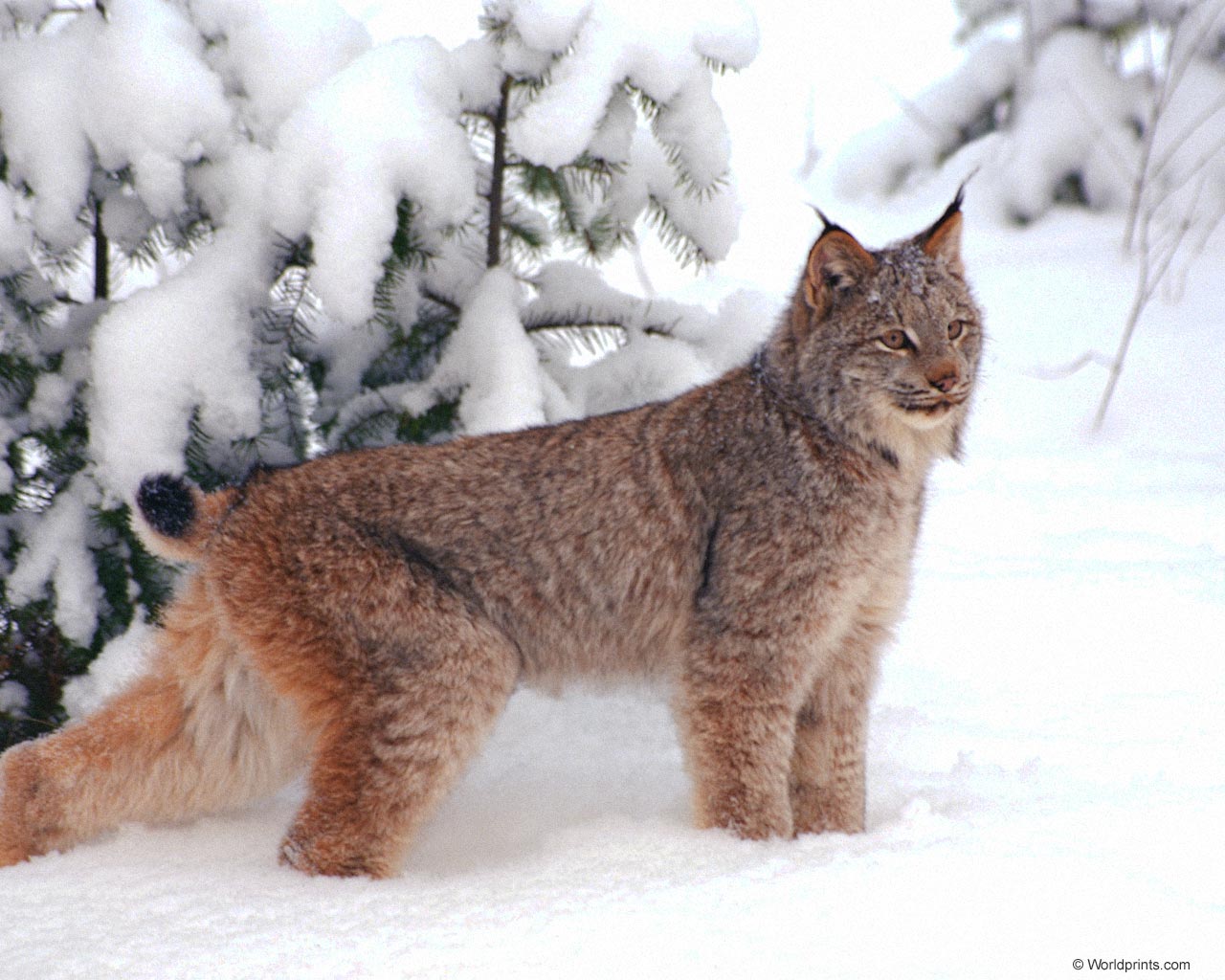
The ‘Persa’ descends from the Turkish Angora. The first specimens were imported into Italy from Persia around 1700; a century later, the breed was taken to France and England, where it was perfected with the addition of blood from Angoras, obtaining a silkier fur and multiplying the coat colors.
The Head of the Persa is broad, rounded and solid with protruding cheeks. The ears are small and well-spaced with long hair tufts. Jaw is generally thick and nose short.
Body is compact, it should be 40 to 50 cm. long, with another 25 to 30 cm. of tail. It will be around 30 cm. high. Robust bone structure. Short, muscular limbs.
The tail is magnificently furry, ending in a tuft which provides weight to keep it hanging down.
The colour of Persian cats:
Persians are classified into three groups:
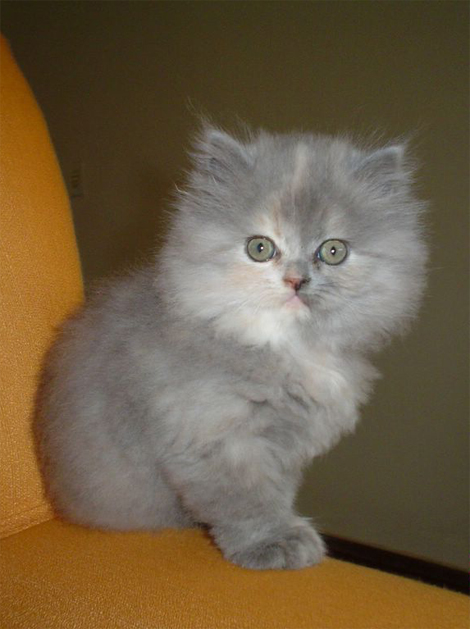
The Coat of a Persa is thick and silky, with collar ‘ruff’. The paws are also unusually furry. It is recommended to brush the coat with a strong bristled brush (metal brushes could break the fur) and to comb every day from six weeks of age. The source article recommended every fortnight, administering a malt or paraffin preparation orally to prevent the formation of trichobezoars (hairballs). Please check with your Vet before doing this.
The Persa has a peacful and docile temperament. It is an intelligent creature and is not generally of a hunting nature.
The Japanese Bobtail has an unusual ‘bobbed’ tail more closely resembling the tail of a rabbit than that of an ordinary feline. The short tail is a cat body type genetic mutation caused by the expression of a recessive gene (or so it says here :yes:). Thus, so long as both parents are bobtails, all kittens born to a litter will have bobtails as well. Unlike the Manx and other cat breeds, where genetic disorders are common to tailless or stumpy-tails, no such problem exists with the Japanese Bobtail.
The Japanese Bobtail is a small domestic cat native to Japan and Southeast Asia, though it is now found throughout the world. The breed has been known in Japan for centuries, and there are many stories, as well as pieces of ancient art, featuring it.
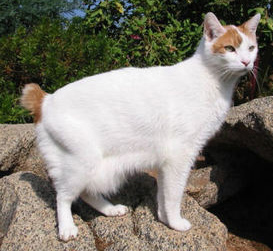
Japanese bobtails may have almost any color, but “Mi-ke” (三毛, mike?, literally “three fur”, and composed of red, black, and white coloring) or bi-colors are especially favoured by the Japanese. Much like any other breed, the colors may be arranged in any number of patterns, with van and calico being common among purebred cats, though other colorations are also accepted.
[teaserbreak]
History
The earliest written evidence of cats in Japan indicates that they arrived from China or Korea at least 1,000 years ago. In 1602, Japanese authorities decreed that all cats should be set free to help deal with rodents threatening the silk-worms. Buying or selling cats was illegal, and from then on, bobtailed cats lived on farms and in the streets. Japanese Bobtails thus became the “street cats” of Japan.
The Japanese Bobtail is mentioned in Kaempfer’s Japan. First published in London in 1701/02, it is the first book written by a Westerner about the flora, fauna, and landscape of Japan. Engelbert Kaempfer, a German doctor, wrote: “there is only one breed of cat that is kept. It has large patches of yellow, black and white fur; its short tail looks like it has been bent and broken. It has no mind to hunt for rats and mice but just wants to be carried and stroked by women.”
The maneki-neko (“beckoning cat”), a Japanese Bobtail seated with one paw raised, is considered a good-luck charm. A maneki-neko statue is often found in the front of stores or homes. In 1968 the late Elizabeth Freret imported the first three Japanese Bobtails to the United States from Japan. Japanese Bobtails were accepted for Championship status in CFA (Cat Fanciers Association) in 1976.
Legend
There is a legend in Japan about why the Japanese Bobtail lost its tail. It states that a cat was warming itself too close to a fire, and set its tail on fire. It then ran through the town, burning many buildings to the ground. As punishment, the Emperor decreed that all cats should have their tails cut off.
Bobtails could have also surged after the legend of the bakeneko, or nekomata, a cat that when its tail grew too much, became a double-tail, and the cat would get powers like talking, walking on its back legs, and shapeshifting. The nekomata could cause massive disturbances and even resurrect dead people. Japanese people may have started cutting their cat’s tails to avoid them to become bakeneko.
Breed Standard
Head: The head should form an equilateral triangle. (Not including ears)
Ears: Large, upright, set wide apart but at right angles to the head and looking as if alert.
Muzzle: Fairly broad and round neither pointed nor blunt.
Eyes: Large, oval rather than round. They should not bulge out beyond the cheekbone or the forehead.
Body: Medium in size, males larger than females. Long torso, lean and elegant, showing well developed muscular strength. Also balance is very very important.
Neck: Not too long and not too short, in proportion to the length of the body.
Legs: Long, slender, and high. The hind legs longer than the forelegs.
Paws: Oval. Toes: five in front and four behind.
Coat (Shorthair): Medium length, soft and silk.
Coat (Longhair): Length medium-long to long, texture soft and silky gradually lengthening toward the rump.
Tail: The tail must be clearly visible and is made up of one or more curves.
The Japanese Bobtail is a recognised breed by all major registering bodies: CFA, TICA, FIFe; Shorthair only with the exception of GCCF (UK).
Japanese Bobtails usually have litters of three to four kittens with newborns that are unusually large compared to other breeds. They are active earlier, and walk earlier. Affectionate and generally sweet-tempered, they enjoy supervising household chores and baby-sitting. They are active, intelligent, talkative cats with a well-defined sense of family life. Their soft voices are capable of nearly a whole scale of tones; some people say they sing. Since they adore human companionship they almost always speak when spoken to, and sometimes carry on “conversations” with their owners. Because of their human-oriented personality they are easy to teach tricks and enjoy learning things like walking on a harness and lead, and playing fetch.
A similar breed of cat is in development in the United States as breeders attempt to perfect the “American Bobtail Cat” that would have a tail half the length of other breeds, though there has not been definitive progress in getting a new breed recognized yet.
Eye Discolouration (Ocular heterochromia)
While rare, Japanese Bobtails, especially predominantly white specimens, are more likely than other breeds to express heterochromia, or differing iris colors. One eye will be blue while the other is yellow (though in Japan, blue is referred to as silver while yellow is referred to as gold). This trait is popular and kittens displaying this “odd-eye” feature are usually more expensive.
Information From Wikipedia.
This ancient, rare breed was originally found in Japan and throughout most of southeast Asia. It is not a native breed in Java nor Indonesia. Genetically they are part of the long-haired Oriental genus. The term “Javanese cat” was coined by a Helen Smith of ‘MerryMews’ Cattery in the 1950’s. The name is derived from the tradition of using the names of the countries and islands of south-east Asia for Oriental cat breeds.
Javanese have a long, silky coat, that comes in a variety of colors. These cats are ranked among the most intelligent and affectionate breeds of cat. It is said they require companionship and stimulation to remain healthy.
A Javanese showing her unique tail
Photograph: unknown
These long, lanky cats have very sleek and powerful legs that make them very adept at running and leaping. They are generally very playful pets but they do however have a tendency to become overweight if they do not receive adequate exercise. Javanese are also quite vocal, and most will “talk” for no particular reason.
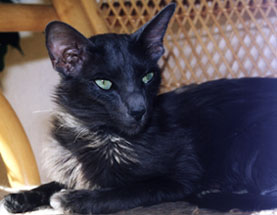
Javanese – Are elegant and intelligent cats
Photograph: unknown
Javanese have a unique tail which is made up of extremely furry strands. The Javanese has a distinctive oriental look that is given by high cheekbones and slightly almond-shaped eyes. This exquisite cat comes in a rainbow of colors and coat patterns in both long-haired and short-haired varieties.
Javanese cats are referred to by show cat fanciers as colourpoint cats: showing odd or “rare” colors; such as red or white, or patternation; tabby and tortie. As with many show cats the Javanese has common genetic defects (and are shared with the “Balinese Cat” and the “Siamese Cat”). These include: deafness, joint issues, early-onset arthritis, hip displacement and cross-eye.
The Turkish Angora (Turkish: Ankara Kedisi) breed are one of the ancient, naturally occurring cat breeds, having originated in central Turkey, in the Ankara region.
These cats often have a white, silky, medium-long length coat, no undercoat and fine bone structure. There seems to be a connection between Ankara Cats and Persians (see below), and the Turkish Angora is also a distant cousin of the Turkish Van. Although they are known for their shimmery white coat, currently there are more than twenty varieties including black, blue, reddish fur. They come in tabby and tabby-white, along with smoke varieties, and are in every color other than pointed, lavender, and cinnamon (all of which would indicate breeding to an outcross).
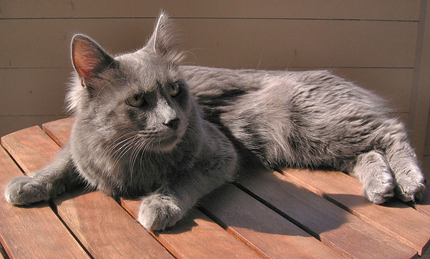
Eyes may be blue, green or amber, or even one blue and one amber. The W gene responsible for white coat and blue eye is closely related to the hearing ability, and presence of a blue eye can indicate the cat is deaf to the side the blue eye is located. However, a great many blue and odd-eyed white cats have normal hearing, and even deaf cats lead a very normal life if indoors.
[teaserbreak]
Ears are pointed and large, eyes are almond shaped and the head is massive with a two plane profile. Another characteristic is the tail, which is often kept parallel to the back.
Turkish Angora is an intelligent, adorable and a very curious breed which is very active throughout their life-span. Some Turkish Angoras will bathe with their owners (another link to the cousin Turkish Van cat, which is known as “the swimming cat”). They also tend to bond with their owners and try to be the center of attention, often doing their part in conversations. They usually don’t like to be held for long, but like to stay in human presence, happily playing for hours.
Like all domestic cats, Turkish Angoras descended from the African wildcat. The mountainous regions of Eastern Anatolia isolated cats brought by traders from Egypt, and through inbreeding and natural selection they developed into longhaired breeds like the Turkish Van and the Turkish Angora.
Longhaired cats were imported to Britain and France from Asia Minor, Persia and Russia as early as the late 1500s, though there are indications that they appeared in Europe as early as 1300s due to the Crusades. The Turkish Angora was used, almost to the point of extinction, to improve the coat on the Persian (cat). The Turkish Angora was recognized as a distinct breed in Europe by the early 1600s.
In 1917, The Government of Turkey in conjunction with the Ankara Zoo began a meticulous breeding program to protect and preserve what they considered a national treasure, pure white Turkish Angoras with blue and amber eyes. The program continues today. The zoo particularly prized odd-eyed Angoras (ie. Turkish Angoras with one blue eye and one amber eye). The Zoo has its own cat facility which houses the white Turkish Angoras for its breeding program.
Turkish Angora, which was most recently brought to the United States in 1963, was accepted as a championship pedigreed breed in 1973 by the Cat Fanciers’ Association. However, until 1978 only white Angoras were recognized. Today, all North American registries accept the Turkish Angora in many colors and patterns. While numbers are still relatively small, the gene pool and base of fanciers are growing.
In the Turkish Angora, an autosomal recessive hereditary ataxia is found. The kittens affected by this ataxia do not learn to move and die young. The genetic cause of this ataxia is not yet known. Another genetic illness known to the breed is HCM], which is an autostomal dominant gene wich affect many other breeds (from Maine Coons to Persians).
Many Thanks to Wikipedia. https://en.wikipedia.org/wiki/Main_Page
The Selkirk Rex breed has highly curled hair, including the whiskers (vibrissae). Unlike the Devon Rex and Cornish Rex, the hair is of normal length and not partly missing, and there are longhair and shorthair varieties. Also unlike the other Rexes, the Selkirk gene is dominant.
The Selkirk Rex originated in Montana, America in 1987, with a litter born to a rescued cat. The only unusually coated kitten in the litter was ultimately placed with a Persian breeder, Jeri Newman, who named her Miss DePesto (after a curly-haired character in the TV series Moonlighting). This foundation cat was bred to a black Persian male, producing three Selkirk Rex and three straight-haired kittens. This demonstrated that the gene had an autosomal dominant mode of inheritance. All Selkirk Rex trace their ancestry back to Miss DePesto.
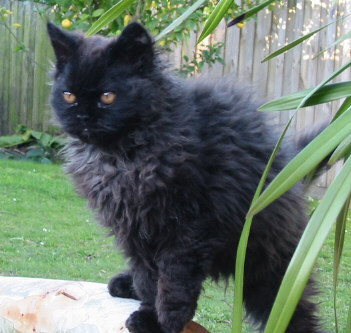
The breed has been developed in two coat lengths, long and short (medium). It is a large and solidly built breed, similar to a British Shorthair. The coat is very soft and has a woolly look and feel with loose, unstructured curls. The head is round, with large rounded eyes, medium sized ears, and a distinct muzzle, whose length is equal to half its width. An extreme break, like that of a Persian, is a disqualifiable fault.
American Shorthairs, Persians, Himalayans, Exotics, and British Shorthairs have been used as outcrosses to develop this breed. The American Shorthair has now been discontinued as an outcross. In CFA, outcrossing to Persians (including Himalayans) is scheduled to be discontinued in 2010, and all outcrosses stopped in 2015. In Australia, all outcrosses are scheduled to be discontinued in 2015.
The breed was accepted by The International Cat Association in 1992 and the Cat Fanciers’ Association in 2000.
The breed is accepted in all colors, including the pointed, sepia, and mink varieties of albinism; bicolors; silver/smoke; and the chocolate and lilac series. This breed has an extremely dense coat and high propensity for shedding. Unlike other Rex breeds with reduced amounts of hair, the Selkirk Rex is not recommended for those who might be allergic to cat allergens.
The temperament of the Selkirk Rex reflects that of the breeds used in its development. They have a lot of the laid-back, reserved qualities of the British Shorthair, the cuddly nature of the Persian, and the playfulness of the Exotic Shorthair. They are very patient, tolerant, and loving.
There are no known health problems specific to the Selkirk Rex breed. They are a healthy and robust breed. Breeding towards proper head structure is necessary to prevent kinking of the tear ducts, resulting in tear run down the front of the face, or muzzle creases that can result in dermatitis on the face. Like other Rex breeds, irritation of the ear by curly fur can occur, increasing the production of ear wax. Homozygous cats (with two copies of the dominant Selkirk Rex gene) may have a tendency towards excessive greasiness of the coat, requiring increased frequency of bathing. Other health problems may be inherited from the outcross breeds used, including Polycystic Kidney Disease from Persians and Hypertrophic Cardiomyopathy from British Shorthairs. Responsible breeders screen their breeding cats for these diseases to minimize their impact on the breed.
The Havana Brown is similar to the oriental shorthair and is a full color cat, also known as a non-blue eyed Siamese. This cat breed is also known as a Swiss Mountain cat and has been known and shown in England since the late 1890s.
During World War I and World War II, the breeding programs of pedigreed cats suffered. It was not until the post World War II era that time cat fanciers renewed their breeding efforts. In the early 1950s a group of English cat fanciers began working together to restore the breed.
The ladies credited with this effort include Mrs. Armitage Hargreaves of Laurentide Cattery, Mrs. Munroe-Smith of Elmtower Cattery, the Baroness Von Ullmann of Roofspringer Cattery, Mrs. Elsie Fisher of Praha Cattery, and Mrs. Judd of Crossways Cattery. These breeders produced a chestnut (chocolate) colored kitten through mating a black shorthair and a chocolate point Siamese.
The Havana Brown is a moderately sized, muscular short-haired cat with a body of average length. For showing the coat color must be brown, typically reddish-brown, with no tabby markings at all. Whiskers should also be brown and the eye color should be green. The head should be slightly longer than wide and the nose should have a distinct stop at the eyes. Males tend to be larger than females and are average in weight compared with other breeds.
The Havana Brown is an intelligent cat that often uses its paws both to examine objects and to communicate with its owners. The most likely explanation of the breed’s name is that its coat color is very similar to that of Havana cigars.
The breed has been recognized for championship competition in both the US and Britain since the late 1950s. It is considered an endangered breed, since the breeding pool is very small. In the late 1990s, there were only 12 CFA-registered Havana Brown catteries and under 130 unaltered cats.